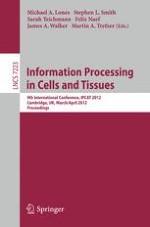This book constitutes the refereed proceedings of the 9th International Conference on Information in Cells and Tissues, IPCAT 2012, held in Cambridge, UK, in March/April 2012.
The 13 revised full papers presented together with 26 extended abstracts were carefully reviewed and selected from numerous submissions. The papers cover a wide range of topics in disciplines related to genetic and epigenetic networks, transcriptomics and gene regulation, signalling pathways and responses, protein structure and metabolic networks, patterning and rhythm generation, neural modelling and neural networks, biomedical modelling and signal processing, information processing and representation, and algorithmic approaches in computational biology.
